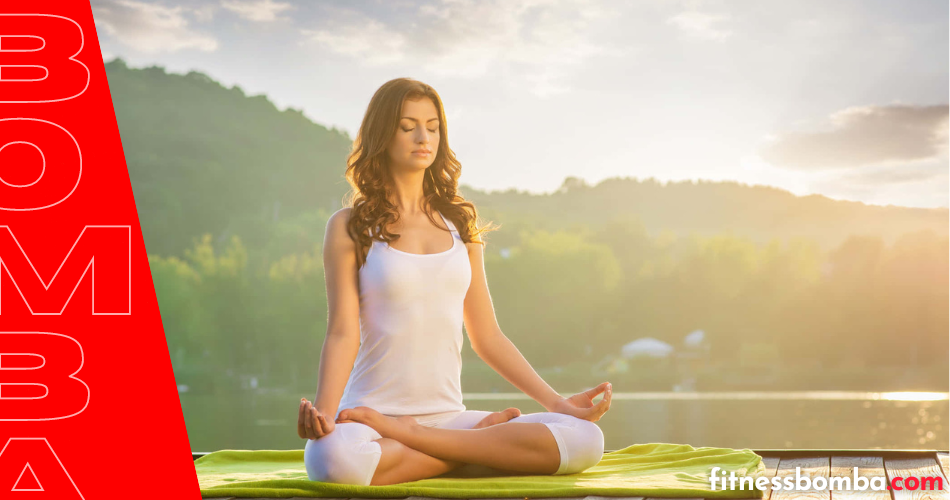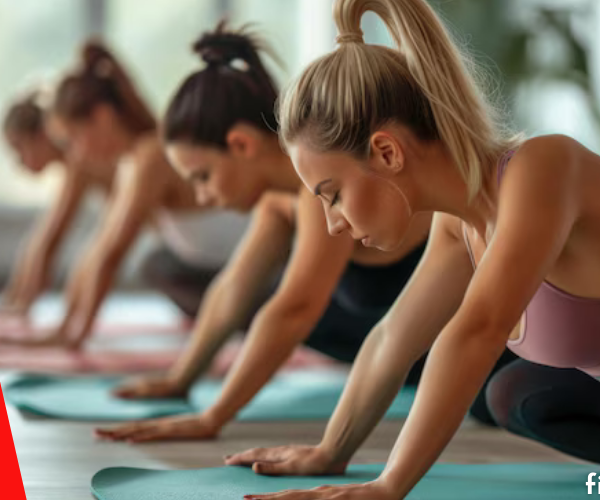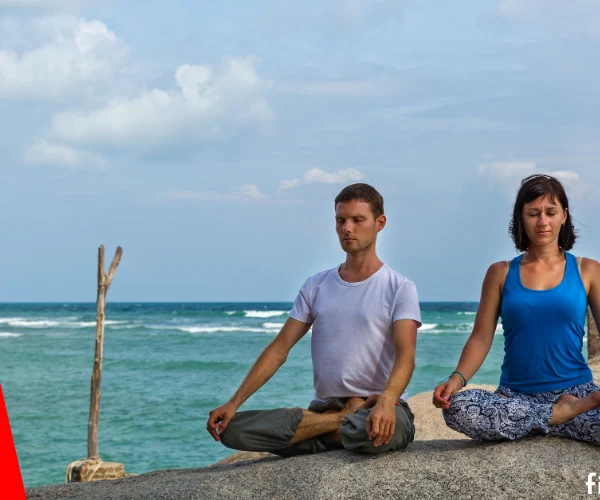As the demands of modern life relentlessly tug at your mental and physical well-being, the search for respite can feel like a never-ending battle. But what if there was a time-honored practice that could transport you to a sanctuary of calm, guiding you back to a state of inner harmony and balance? Enter the transformative world of yoga – a profound practice that harnesses the intricate mind-body connection to alleviate stress, soothe anxiety, and cultivate a deep sense of peace.
This comprehensive guide invites you on a journey to unlock the rejuvenating benefits of seven carefully curated yoga poses that can help you find refuge amidst the chaos. By tapping into the power of mindful movement, breath work, and relaxation techniques, you’ll discover how to reclaim your emotional equilibrium and recenter your focus, no matter the stressors you face. Whether you’re seeking relief from burnout, anxiety, or simply a deeper connection to the present moment, these transformative asanas offer a practical roadmap to a more harmonious, stress-free life.
So, take a deep breath, let go of your worries, and prepare to embark on a transformative exploration of yoga poses to relieve stress, stress relief exercises, restorative yoga asanas, mindfulness meditation, yoga for anxiety, relaxation poses, yoga sequences, mental health benefits, and the profound mind-body connection that lies at the heart of this ancient practice.
Table of Contents
Key Takeaways
- Explore seven transformative yoga poses that can help alleviate stress and cultivate inner peace.
- Discover the profound mind-body connection that underpins the stress-relieving benefits of yoga.
- Learn how to harness the power of mindful movement, breath work, and relaxation techniques for greater well-being.
- Unlock the rejuvenating benefits of yoga for managing anxiety, burnout, and deepening your connection to the present moment.
- Incorporate these practical yoga sequences into your daily routine to achieve a greater sense of emotional equilibrium and inner calm.
Introduction to Yoga for Stress Relief
Yoga has emerged as a powerful tool for managing stress and promoting mental wellbeing. At the heart of this ancient practice lies the profound mind-body connection, where physical postures (asanas), breath work (pranayama), and meditation work in harmony to calm the nervous system, reduce anxiety, and foster a greater sense of inner peace.
Understanding the Mind-Body Connection
The practice of yoga is rooted in the recognition that our physical, emotional, and psychological states are intrinsically linked. By engaging in mindful movements, controlled breathing, and focused awareness, individuals can tap into the body’s innate ability to alleviate stress and achieve a state of greater equilibrium. This mind-body connection forms the foundation of yoga’s therapeutic benefits, allowing practitioners to cultivate a deeper understanding of their inner landscape and the ways in which it manifests externally.
Benefits of Yoga for Mental Health
Incorporating yoga into one’s lifestyle can yield a myriad of benefits for mental health and overall wellbeing. Regular practice has been shown to reduce symptoms of anxiety, depression, and burnout, while also improving mood, focus, and concentration. Through the integration of physical postures, breath work, and meditation, yoga can help individuals develop greater emotional resilience, self-awareness, and a heightened sense of calm and inner harmony.
By understanding the scientific and experiential foundations of yoga for stress management, readers will be better equipped to integrate these transformative practices into their daily lives, unlocking the path to greater inner peace and mental clarity.
Yoga Poses to Relieve Stress
Embracing the power of yoga can be a transformative journey towards stress relief and inner peace. This section delves into three specific yoga poses that can effectively alleviate stress and promote relaxation. By tapping into the profound mind-body connection, these carefully curated yoga poses to relieve stress can provide a sanctuary of calm amidst the demands of daily life.
1. Child’s Pose (Balasana)
Child’s Pose (Balasana) is a gentle, restorative posture that encourages the release of physical and mental tension. By folding the body forward and resting the forehead on the mat, this restorative yoga asana allows the body and mind to find a sense of comfort and refuge. The calming nature of this pose can help soothe the nervous system, reduce anxiety, and facilitate a deeper connection to the present moment.
2. Forward Fold (Uttanasana)
The Forward Fold (Uttanasana) is an inverted pose that can help calm the nervous system and foster a sense of grounding. As the body folds forward, the head drops below the heart, facilitating a release of tension and promoting a state of relaxation. This yoga sequence for stress relief can be particularly beneficial for individuals experiencing anxiety or feelings of overwhelm, as it encourages a shift in perspective and a deeper connection to the self.
3. Standing Forward Bend (Hastapadasana)
The Standing Forward Bend (Hastapadasana) is another inverted pose that can be highly effective in reducing stress and promoting relaxation poses. Similar to the Forward Fold, this posture allows the head to drop below the heart, calming the nervous system and fostering a sense of grounding. As the body surrenders into the stretch, the mind can find refuge in the present moment, cultivating a profound sense of inner peace and well-being.
By incorporating these stress relief exercises into your yoga practice, you can unlock a sanctuary of calm and tap into the restorative power of mindful movement and breath work. Explore the transformative benefits of these yoga poses and begin your journey towards greater stress management and emotional resilience.
Restorative Yoga Asanas for Anxiety
Embracing the art of restorative yoga can be a powerful ally in the fight against anxiety. Two particularly potent poses that can help soothe the mind and promote deep relaxation are Legs Up the Wall (Viparita Karani) and Corpse Pose (Savasana).
4. Legs Up the Wall (Viparita Karani)
This gentle inversion allows the body to find a state of calm and equilibrium. By elevating the legs against the wall, the restorative yoga asanas work to regulate the nervous system, reduce feelings of tension or unease, and encourage a sense of mental clarity. The inverted position helps to gently draw blood back towards the heart, promoting circulation and a sense of grounding. With each breath, the practitioner can sink deeper into a state of relaxation, allowing the mind-body connection to deepen and the yoga for anxiety to take hold.
5. Corpse Pose (Savasana)
Perhaps the most restorative of all relaxation poses, Corpse Pose (Savasana) invites the body and mind to completely let go. By lying in a supine position, with the limbs gently extended and the eyes closed, the practitioner can surrender to the present moment and allow the restorative yoga asanas to work their magic. This deeply soothing and meditative posture promotes a profound sense of restoration, as the body and mind release any lingering tension or stress, and the practitioner experiences a profound state of inner peace.
By incorporating these two powerful restorative yoga asanas into their practice, individuals seeking relief from anxiety can tap into the transformative potential of the mind-body connection, cultivating a greater sense of calm, resilience, and emotional wellbeing.
Breathing Techniques for Relaxation
Harnessing the power of breath work can be a transformative tool in the pursuit of stress relief and inner calm. This section explores two captivating breathing techniques that can help regulate the nervous system, promote mental focus, and induce a state of deep relaxation.
6. Alternate Nostril Breathing (Nadi Shodhana)
Alternate Nostril Breathing, or Nadi Shodhana, is a calming, balancing practice that can help restore a sense of equilibrium and inner harmony. By alternating the inhalation and exhalation through the left and right nostrils, this technique encourages the flow of prana (life force energy) and can have a profound impact on stress levels, anxiety, and overall wellbeing. Nadi Shodhana has been shown to regulate the autonomic nervous system, reduce heart rate, and induce a state of deep relaxation.
7. Ocean Breath (Ujjayi Pranayama)
The Ocean Breath, also known as Ujjayi Pranayama, is a soothing, rhythmic breathing practice that can transport the mind to a serene, meditative state. By constricting the back of the throat and breathing through the nose, this technique creates a soft, oceanic sound that can be deeply calming and grounding. Ujjayi Pranayama has been found to increase mindfulness meditation, reduce anxiety, and foster a profound sense of relaxation and inner peace.
Whether you’re seeking relief from yoga for anxiety or simply craving a moment of respite, these breathing techniques can be invaluable tools in your journey towards greater relaxation poses and emotional wellbeing. By incorporating these powerful practices into your daily routine, you can unlock a sanctuary of calm and cultivate a deeper connection to the present moment.
Conclusion
In this comprehensive guide, we have explored the profound power of yoga as a transformative tool for stress relief and mental well-being. By delving into the intricate mind-body connection that underpins the practice of yoga, we have discovered how a carefully curated sequence of poses and breathing techniques can unlock a sanctuary of calm and inner peace amidst the demands of modern life.
The seven yoga poses and two breathing exercises highlighted in this article offer a practical roadmap for readers to harness the rejuvenating benefits of mindful movement and relaxation. From the soothing restoration of Child’s Pose to the calming balance of Alternate Nostril Breathing, these practices have the potential to alleviate anxiety, enhance emotional resilience, and foster a deeper connection to the present moment.
As readers continue to explore the rich tapestry of yoga, they are encouraged to experiment with the recommended yoga poses to relieve stress and stress relief exercises, allowing the mind-body connection to guide them on a journey of self-discovery and mental health benefits. By embracing the power of mindful practice, individuals can unlock a sanctuary of calm and find the inner resources to thrive amidst the ever-changing tides of modern life.
FAQ
What are the benefits of yoga for stress relief?
Yoga can offer a range of benefits for stress relief and mental wellbeing. Through the practice of physical postures, breath work, and meditation, yoga can help calm the nervous system, reduce anxiety, improve mood, enhance focus and concentration, and cultivate a greater sense of inner peace and emotional resilience.
What are some effective yoga poses for relieving stress?
Some of the most effective yoga poses for relieving stress include Child’s Pose (Balasana), Forward Fold (Uttanasana), Standing Forward Bend (Hastapadasana), Legs Up the Wall (Viparita Karani), and Corpse Pose (Savasana). These restorative asanas can help release physical and mental tension, regulate the nervous system, and induce a state of deep relaxation.
How can breathing techniques be used to manage stress and anxiety?
Breathing techniques, such as Alternate Nostril Breathing (Nadi Shodhana) and Ocean Breath (Ujjayi Pranayama), can be powerful tools for managing stress and anxiety. These practices can help regulate the nervous system, promote a sense of calm, and cultivate a greater awareness and control over the breath, which can have a profound impact on emotional and psychological wellbeing.
What is the connection between the mind and body in the context of yoga and stress relief?
The mind-body connection is central to the practice of yoga. By engaging the body through physical postures and breath work, yoga can have a direct impact on the mind, helping to reduce stress, anxiety, and other negative emotional states. Conversely, the practice of mindfulness and meditation can also influence the body, promoting a sense of relaxation and physiological balance. This profound interplay between the mind and body is the foundation for yoga’s stress-relieving benefits.
How can incorporating yoga into a daily routine help manage long-term stress and improve overall mental health?
Regularly practicing yoga poses, breathing techniques, and meditation can have a profound and lasting impact on managing stress and improving overall mental health. By making these practices a consistent part of one’s lifestyle, individuals can cultivate a greater sense of emotional resilience, focus, and inner calm to navigate the demands of daily life. Over time, the mind-body benefits of yoga can help reduce the physiological and psychological effects of chronic stress, leading to improved mood, better sleep, and a greater sense of overall wellbeing.



